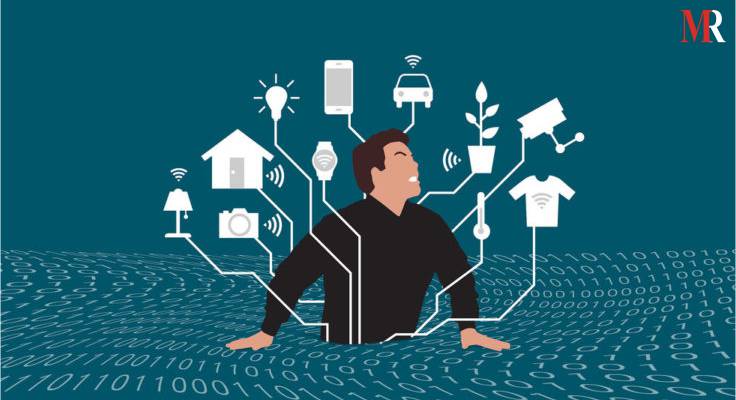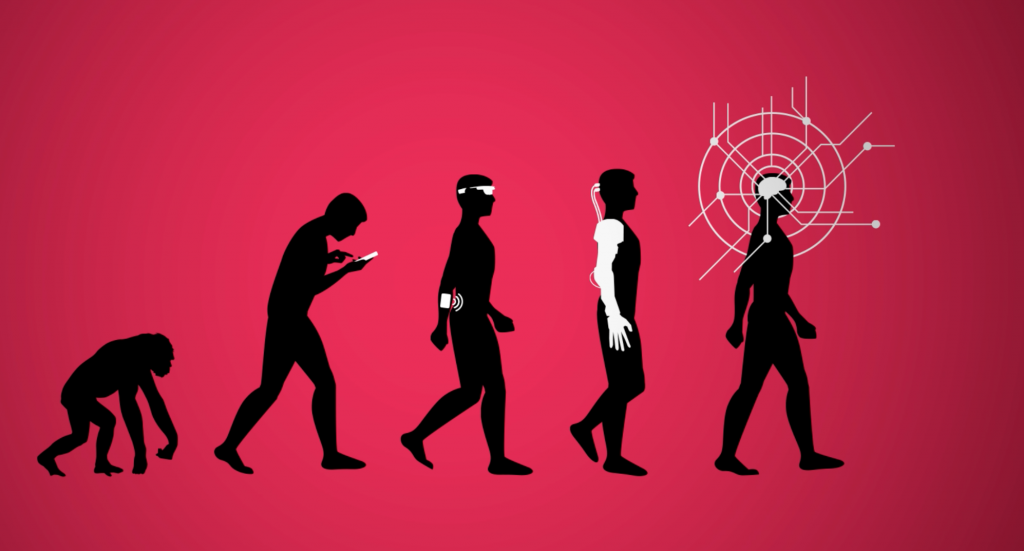Technology plays a crucial role in enhancing human life through various advancements and innovations. From assisting individuals with disabilities like blindness and hearing impairments to improving healthcare with artificial joints and cardiovascular implants, technology has positively impacted human well-being.
The relationship between humans and technology is fundamental for responsible development across various fields such as energy, health, work, and entertainment. In today's digital age, technology has revolutionized communication, transportation, and connectivity, significantly improving the quality of life for people worldwide.
As society continues to evolve, the integration of technology into everyday life underscores its importance in shaping a more efficient and interconnected world.
Introduction To Digital Empowerment
Digital empowerment encompasses the use of technology to enhance human capabilities and improve quality of life. From assistive devices for people with disabilities to advancements in healthcare, technology plays a crucial role in uplifting and empowering individuals. Through innovative solutions, technology has the potential to greatly benefit humanity in various aspects of life.
The Role Of Technology In Modern Society
Technology plays a vital role in modern society, shaping how we live, work, and communicate. It has revolutionized various industries, enhancing efficiency and connectivity.Objectives Of Bridging The Digital Divide
One crucial objective of bridging the digital divide is to ensure equal access to technology and information. This helps empower individuals and communities, fostering growth and development. In today's digital age, the empowerment of individuals through technology is essential for societal progress. By bridging the digital divide, we can create a more inclusive and connected world.
Credit: www.peoplematters.in
Identifying The Digital Divide
Technology has become an integral part of modern society, impacting various aspects of human life. However, not everyone has equal access to technology, leading to disparities known as the digital divide. Identifying and understanding these disparities is crucial in addressing the challenges associated with unequal access to technology.
Global Disparities In Tech Access
In today's interconnected world, access to technology is not uniform across different regions and countries. While developed nations boast advanced technological infrastructure and widespread internet access, many developing countries still struggle with limited connectivity and technological resources. This global discrepancy in tech access highlights the need for concerted efforts to bridge the digital divide on a global scale.
Urban Vs Rural Tech Gaps
Even within countries, disparities in technology access are evident between urban and rural areas. Urban centers often enjoy better connectivity, access to high-speed internet, and advanced technological facilities. On the other hand, rural communities may face challenges such as limited internet infrastructure and inadequate access to technological resources. Addressing the urban-rural tech gap is essential to ensure that all segments of society can benefit from technological advancements.
Key Technologies In Empowerment
Technology plays a crucial role in empowering individuals, especially in areas such as communication, accessibility, and health. With the advancement of technology, people with disabilities are now able to access assistive tools and devices that enhance their quality of life. Additionally, mobile connectivity and internet access have become essential in bridging the digital divide and providing access to information and resources.
Mobile Connectivity And Internet Access
Mobile connectivity and internet access have revolutionized the way people communicate and access information. With the widespread availability of smartphones and mobile data, individuals can stay connected, access educational resources, and engage in online opportunities regardless of their geographical location.
Assistive Technologies For Disabilities
Assistive technologies have significantly improved the lives of individuals with disabilities. From screen readers for the visually impaired to adaptive keyboards for those with motor disabilities, technology has opened up new possibilities for participation in education, employment, and social activities.
Case Studies Of Successful Integration
Explore compelling case studies showcasing successful integration of technology for human advancement. Witness how innovative solutions have revolutionized accessibility for individuals with disabilities and improved quality of life through healthcare advancements. Discover the profound impact of technology on enhancing human experiences and capabilities.
Technology In Education Enhancement
Technology has revolutionized the way education is delivered to students. With the integration of technology in education, students have access to a vast array of resources and tools that aid in their learning process. For example, e-learning platforms offer personalized learning experiences to students, and educational apps make learning interactive and engaging. Moreover, technology has enabled remote learning, which has become increasingly important during the COVID-19 pandemic. One case study of successful integration of technology in education is the use of educational apps in Finland. The Finnish education system is known for its high-quality education, and technology has played a crucial role in its success. Finnish schools use a variety of educational apps that are designed to engage students and improve learning outcomes. The use of technology in education has made learning fun and interactive for students, and has helped to improve their academic performance.Healthcare Access Through Telemedicine
Telemedicine is the use of technology to deliver healthcare services remotely. It has become increasingly popular in recent years, and has proven to be a successful integration of technology in healthcare. Telemedicine has made healthcare more accessible to people living in remote areas or those who have difficulty accessing healthcare services. One case study of successful integration of telemedicine is the use of telehealth services in rural areas of the United States. Rural areas often have a shortage of healthcare professionals, and telemedicine has helped to bridge this gap. Patients living in rural areas can now access healthcare services remotely, which has improved their health outcomes. Moreover, telemedicine has helped to reduce healthcare costs, as patients no longer have to travel long distances to access healthcare services. In conclusion, technology has played a crucial role in improving human lives. The successful integration of technology in education and healthcare has helped to improve learning outcomes and healthcare access. As technology continues to evolve, it is important to ensure that it is used responsibly, and that it serves humanity well.Barriers To Technology Adoption
Barriers to technology adoption for human-focused advancements include lack of accessibility, affordability, and digital literacy. Overcoming these challenges is crucial for ensuring equitable access to beneficial technologies for all individuals, especially those with disabilities or health conditions.
Barriers to Technology Adoption While technology has the potential to improve our lives in numerous ways, there are still many barriers to its adoption. These barriers can range from economic hurdles to cultural and social challenges. In this section, we will explore some of the most common barriers to technology adoption. Economic Hurdles One of the biggest barriers to technology adoption is the cost. Many people simply cannot afford the latest technology, such as smartphones or computers. This can be particularly challenging for those living in low-income areas or developing countries. Additionally, the cost of maintaining and repairing technology can be prohibitively expensive, which can discourage people from adopting new technology. Cultural and Social Challenges Culture and social norms can also be a significant barrier to technology adoption. For example, in some cultures, there may be a stigma attached to using certain types of technology. Additionally, some people may feel uncomfortable with the idea of sharing personal information online, which can limit their use of technology. Similarly, older generations may be less comfortable with new technology, which can make it harder for them to adopt it. In conclusion, while technology has the potential to improve our lives in many ways, there are still many barriers to its adoption. These barriers can range from economic hurdles to cultural and social challenges. By understanding these barriers, we can work to overcome them and ensure that everyone has access to the benefits of technology.Strategic Frameworks For Inclusion
Technology plays a crucial role in creating inclusive environments for all individuals. Strategic frameworks for inclusion encompass the collaborative efforts of government policies and initiatives, as well as the active roles and responsibilities of the private sector. These frameworks aim to leverage technology to promote accessibility, diversity, and equal opportunities for everyone in the digital landscape.
Government Policies And Initiatives
Government policies and initiatives form the foundation for fostering inclusion through technology. By implementing regulations and support programs, governments can ensure that marginalized communities have access to technological resources and opportunities. This can include initiatives to bridge the digital divide, provide internet access in underserved areas, and enforce accessibility standards for digital platforms and services.
Private Sector Roles And Responsibilities
The private sector plays a pivotal role in driving inclusive technological advancements. Companies have a responsibility to prioritize diversity and inclusion in their product development, design processes, and corporate culture. This involves creating accessible digital interfaces, embracing diverse talent, and investing in technologies that cater to the needs of underrepresented groups. Additionally, corporate social responsibility initiatives can further contribute to inclusive technology by supporting community programs and accessibility-focused projects.
Impact Measurement And Analysis
As technology continues to advance at a rapid pace, it is crucial to measure and analyze its impact on human life. Understanding the effects of technology on society, individuals, and the environment allows for informed decision-making and the development of strategies to maximize its benefits while mitigating potential harms.
Metrics For Assessing Tech Impact
When evaluating the impact of technology, various metrics are used to assess its effects. These metrics may include but are not limited to:
- Economic Impact: Measuring the financial implications of technology adoption and innovation.
- Social Impact: Assessing how technology influences human behavior, relationships, and societal structures.
- Environmental Impact: Gauging the ecological consequences of technological developments and their sustainability.
- Health Impact: Evaluating the effects of technology on physical and mental well-being.
Long-term Benefits Of Digital Inclusion
Embracing digital inclusion not only fosters equality and accessibility but also brings about long-term benefits that positively impact society. Some of the enduring advantages of digital inclusion are:
- Enhanced Education: Providing access to digital resources and educational tools for lifelong learning.
- Improved Employability: Empowering individuals with digital skills, enhancing job opportunities.
- Community Empowerment: Fostering connectedness and civic engagement through digital platforms.
- Economic Development: Facilitating entrepreneurship and economic growth through digital connectivity.

Credit: blog.mirrorreview.com
Future Trends And Predictions
Exploring the upcoming trends and predictions in the technology realm unveils a world of innovation and transformation.
Innovations On The Horizon
As we gaze into the future, several groundbreaking innovations are set to revolutionize the way we interact with technology.
- Artificial Intelligence advancements will reshape industries and enhance user experiences.
- Internet of Things (IoT) integration will bring connectivity to new heights, transforming daily tasks.
- Blockchain technology is poised to revolutionize data security and transaction transparency.
Predicting Changes In Digital Equity
Forecasting the changes in digital equity sheds light on the evolving landscape of technology accessibility and inclusivity.
- Increased focus on bridging the digital divide to ensure equitable access to technology for all.
- Advancements in assistive technologies to empower individuals with disabilities and enhance their daily lives.
- Efforts towards promoting digital literacy and skills development to foster a more inclusive tech-savvy society.

Credit: community.thriveglobal.com
Frequently Asked Questions
How Can Technology Be Used For Human?
Technology can assist people with disabilities and improve quality of life through tools like artificial joints and health implants.
What Technology Has Done For Humanity?
Technology has improved quality of life by transforming communication, healthcare, and connectivity, enhancing daily operations and behaviors.
What Is Technology And Human?
Technology and human are interconnected, enhancing life through communication, healthcare, and accessibility for people with disabilities. Understanding this relationship is crucial for responsible development and acceptance of future technologies in various fields.
Conclusion
In a world intertwined with technology, advancements have significantly improved the quality of life. From aiding individuals with disabilities to enhancing healthcare, technology continues to reshape human experiences. Understanding this relationship is crucial for responsible development and acceptance of future innovations across various fields.